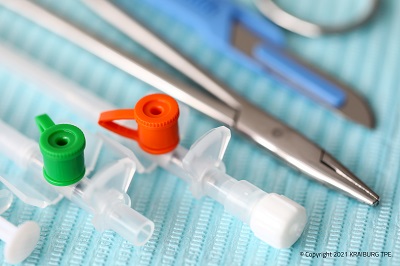As the number of emergency hospital visits and surgical procedures has increased, so has the demand for catheter connectors. Furthermore, technological progress has resulted in these connectors being used for a number of applications. Catheter connectors are available in a variety of types, including needleless IV catheter connectors, suction catheter connectors, and more.
Catheter connectors are used to provide access to infusion and aspiration. They are important device auxiliary components for intravenous access and drug administration in order to reduce the risk of most serious consequences and improve patient compliance.
Medical devices like catheter connectors benefit from high-performance materials such as thermoplastic elastomers (TPEs), which guarantee user safety and efficiency. TPEs are ideal material solutions for the medical industry, mainly because TPEs are halogen and latex-free and are easier to process, in comparison to other materials.

KRAIBURG TPE, a global TPE manufacturer of a wide range of thermoplastic elastomer products and custom solutions for multiple industries, has developed a new line of THERMOLAST® H compounds to meet these requirements.
KRAIBURG TPE’s THERMOLAST® H HC/AP series offers a high degree of flexibility and a strong grip, making it ideal for catheter connector applications. Additionally, THERMOLAST® H features wide hardness ranges from 30-90 Shore A and optimizable processability. The TPE compounds are translucent and can be coloured in a variety of hues to meet customers’ specifications.
The TPE compounds are also biocompatible and free of animal components and other potentially dangerous substances. The materials have also been tested for cytotoxicity in compliance with ISO 10993-5 and GB/T 16886.5, as well as other approvals and standards such as China GB 4806 – 2016, US FDA CFR 21, Regulation (EU) No 10/2011, REACH, and RoHS.

 iConnectHub
iConnectHub
 Login/Register
Login/Register Supplier Login
Supplier Login


























